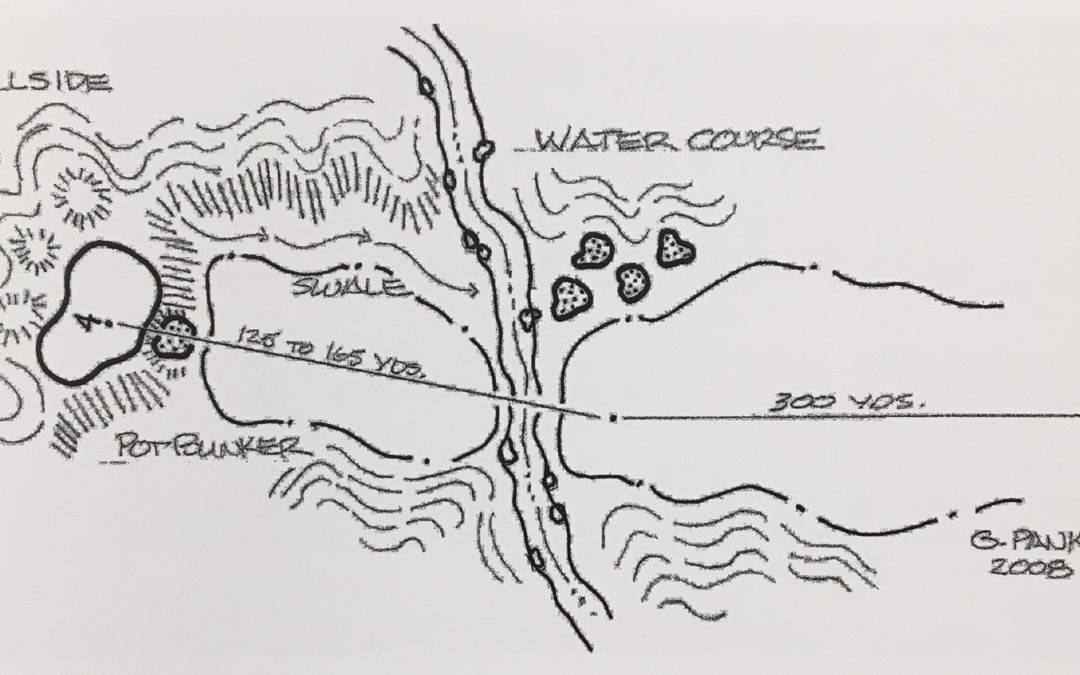Gary Panks captained the Michigan State University golf team and won eighteen amateur titles. By 1978 he began designing golf courses exclusively as Gary Panks Associates, including acclaimed Arizona courses Silver Creek Golf Club in White  Mountain Lakes and Sedona Golf Resort. Panks and PGA Tour player David Graham combined to produce ten outstanding courses under the name Graham & Panks International, including Grayhawk in Scottsdale; The Raven at South Mountain in Phoenix; Turtle Point Golf Course at Laguna Quays Resort in Queensland, Australia; and Chaparral Pines, in the high country of Payson, Arizona.
Mountain Lakes and Sedona Golf Resort. Panks and PGA Tour player David Graham combined to produce ten outstanding courses under the name Graham & Panks International, including Grayhawk in Scottsdale; The Raven at South Mountain in Phoenix; Turtle Point Golf Course at Laguna Quays Resort in Queensland, Australia; and Chaparral Pines, in the high country of Payson, Arizona.
There are a number of basic things that go into most of my routing plans: I strive to balance the number of doglegs so that the course does not favor a particular type of shotmaking. A typical routing plan includes four par-three holes, each playing in a different direction to make golfers encounter the elements differently on each of the holes. I try to include a sporty, short hole of 110 to 135 yards, one in the 150- to 165-yard range, another of 180 to 195 yards, and a long one of 220 to 250 yards, which would require a tee shot with a fairway metal. Of course I familiarize myself with the prevailing wind so these different distances are not negated.
Whenever possible I include one or two short par-four holes with lots of options for the golfer to consider. These can vary in length from 300 to 350 yards. Holes of this type are a particular favorite of mine and other golfers, as well.
Par-five holes should also play to different points on the compass and vary in length. I like to make sure one of the par-fives is not reachable in two shots by anyone, and another which is reachable by most strong players. The other two par-fives are marginally reachable by the strongest of hitters.
In designing the remaining par-fours, a lengthy hole or two of 470 to 500 yards is good. Often I will not include any bunkers or water hazards on these holes due to the length. Most golfers will not hit the green in the regulation two strokes, so it gives me a chance to design the green complex in a way that favors an imaginative short game.
You will seldom find a course of my design with more than three par-four holes in succession since I believe more than that is boring to golfers.
After completing the routing plan, grading studies begin. As the cuts and fills are developed on paper, I pay particular attention to good shot-making strategy and the desired appearance of the hole. Matching the course to its surroundings is always paramount in my thinking in order to provide a seamless transition. In the case of a great natural site, we use the lay of the land as-is, or grade in such a way that the finished product appears quite natural. Should changes in elevation be lacking on a site, cuts and fills will be made to achieve them. This is not too difficult a task since a ten-foot cut near a ten-foot fill makes for a nice twenty-foot change in elevation. All grading plans are done by hand and then inputted to a CAD system for printing. Very little design is done on the computer.
Hazards such as bunkers and water provide options for golfers, and are important to help define fairway landing zones and guard green side cupping locations. The style of the bunker design is often done in harmony with the course environment. Beside the ocean, we create bunkers which resembling water swales or whitecaps. In the mountains we go for a more jagged effect. Bunkers in the hill country will have a more compatible rounded appearance. The depth of bunkers can vary, but we always make sure they are deep enough to compensate for the normal shallowing which occurs over time.
Green contours in my designs normally provide for changes in elevation without being too wild or difficult to maintain. Slopes between cupping areas are usually graded at 7 percent or less, with actual cupping areas from 1 to 3 percent.
Green shapes allow for easy access without forced carries to some cup locations, and include others that do require a forced carry over a hazard.
Finally, landscaping is an important consideration on any course, and as a registered landscape architect, I prepare these plans as well. Locations and varieties of trees, shrubs, and groundcover are critical to the playability of a course. Landscape materials should always be compatible with those encountered on the periphery of the golf course.

